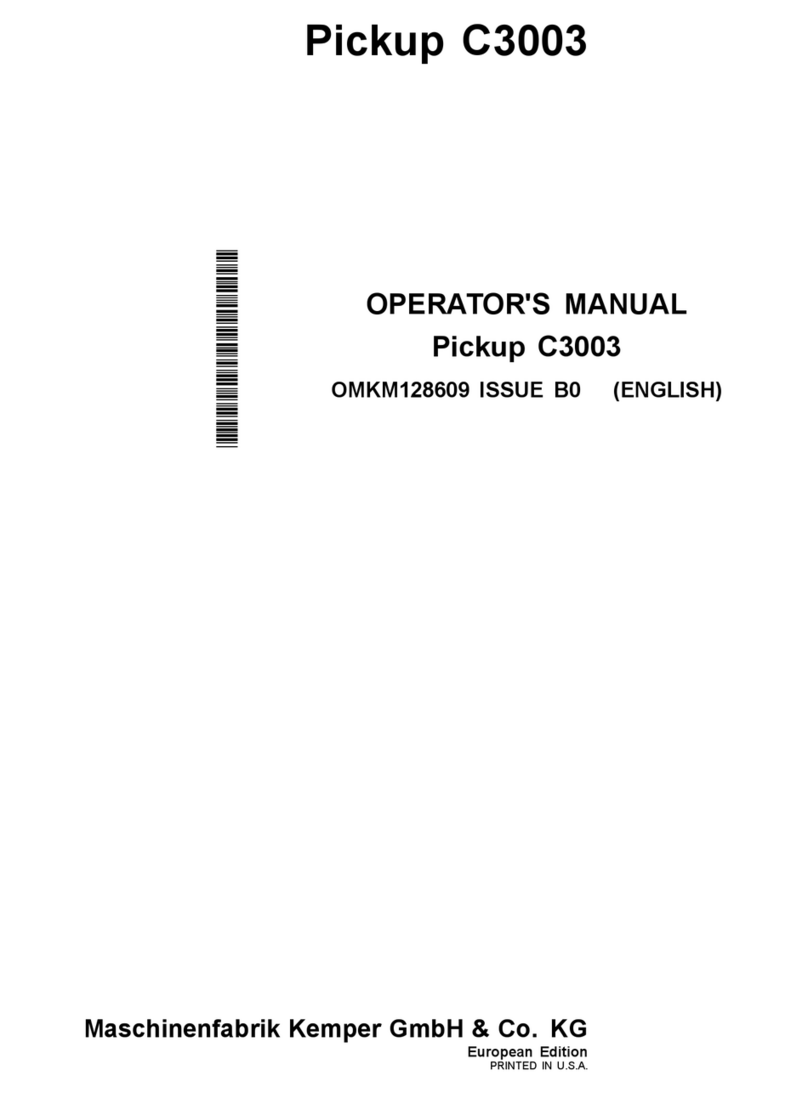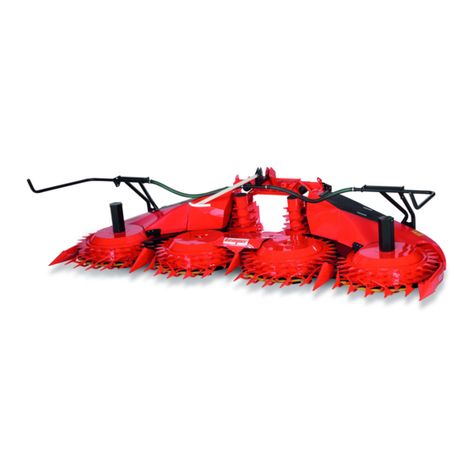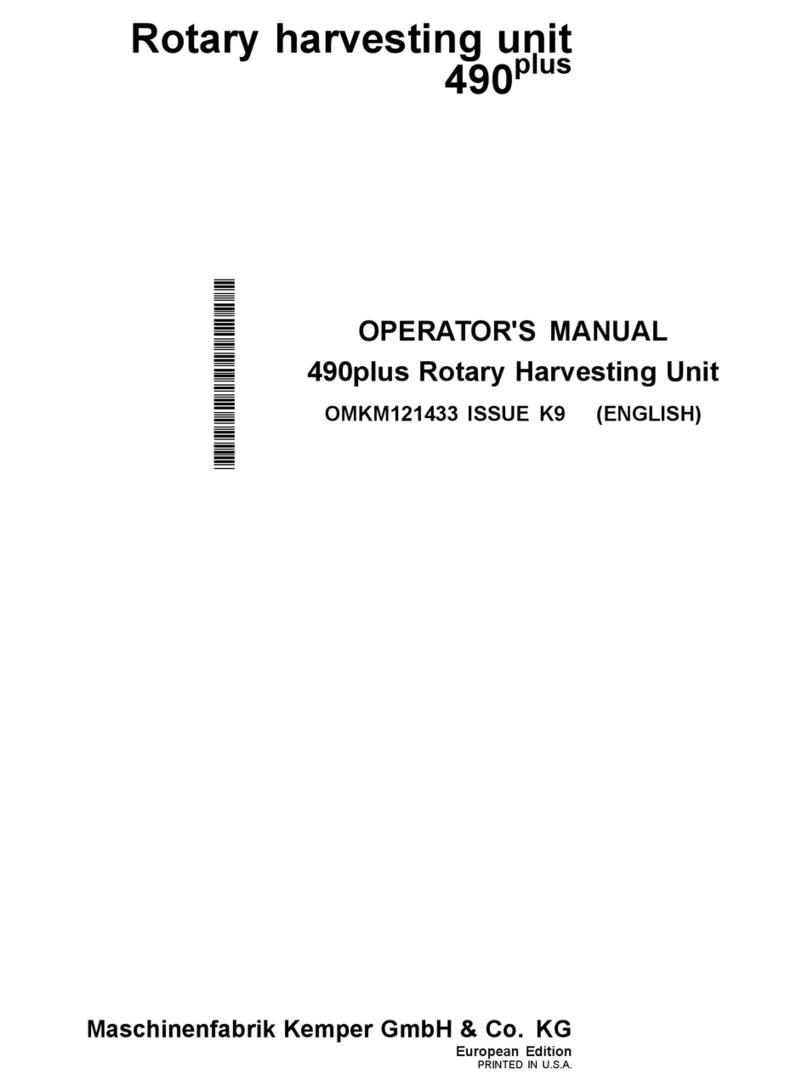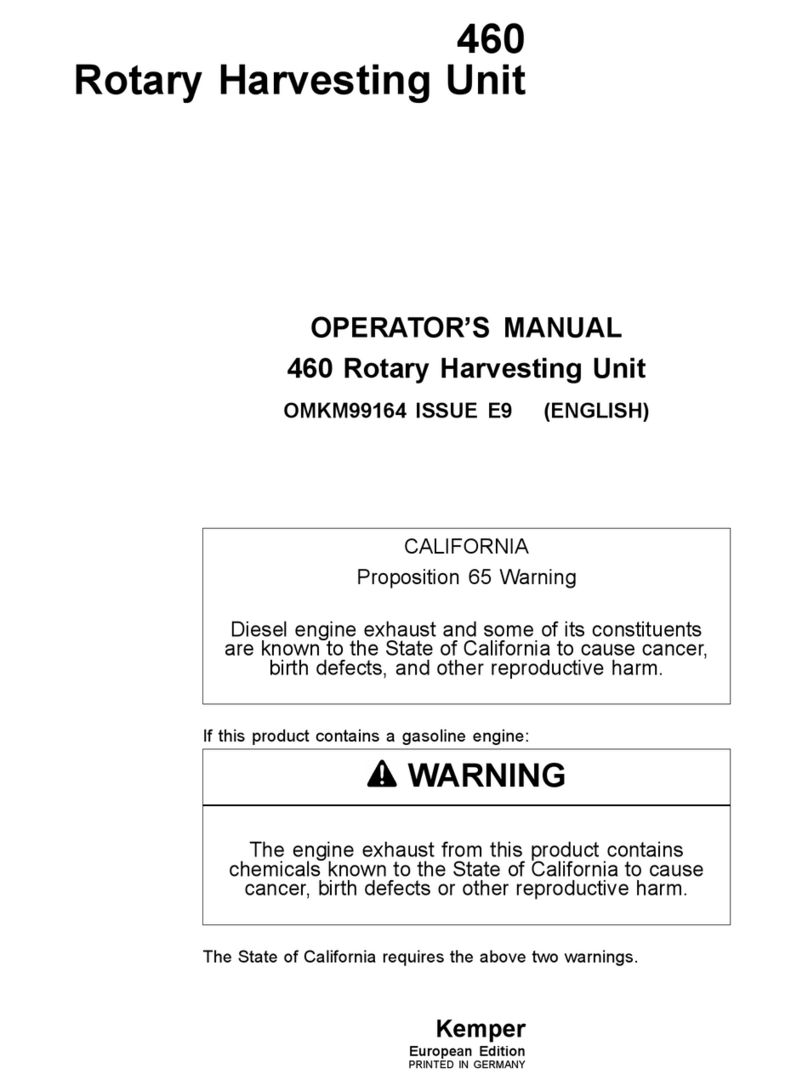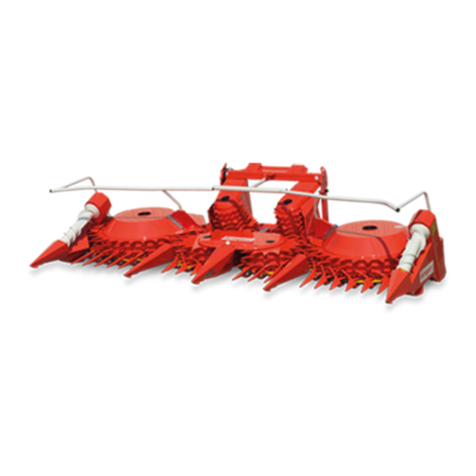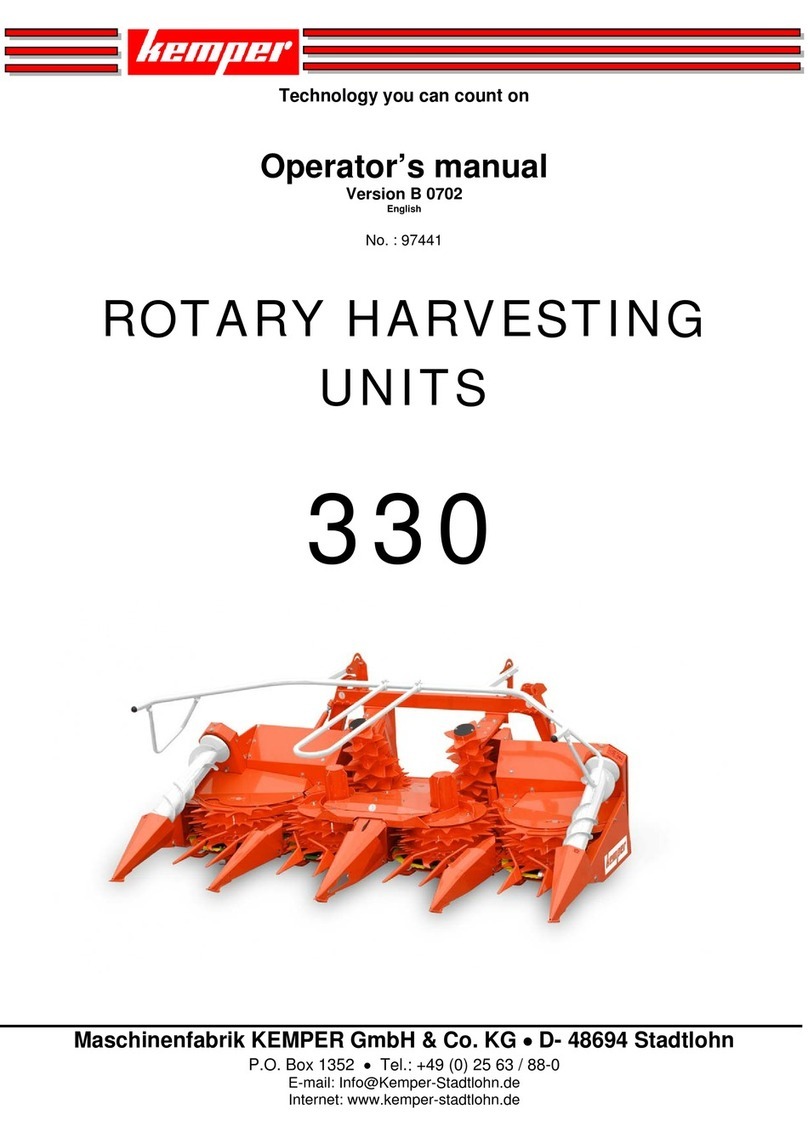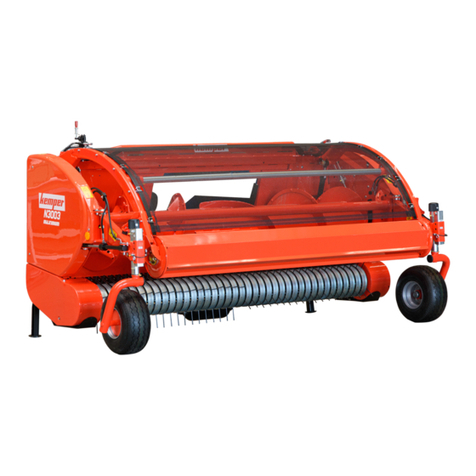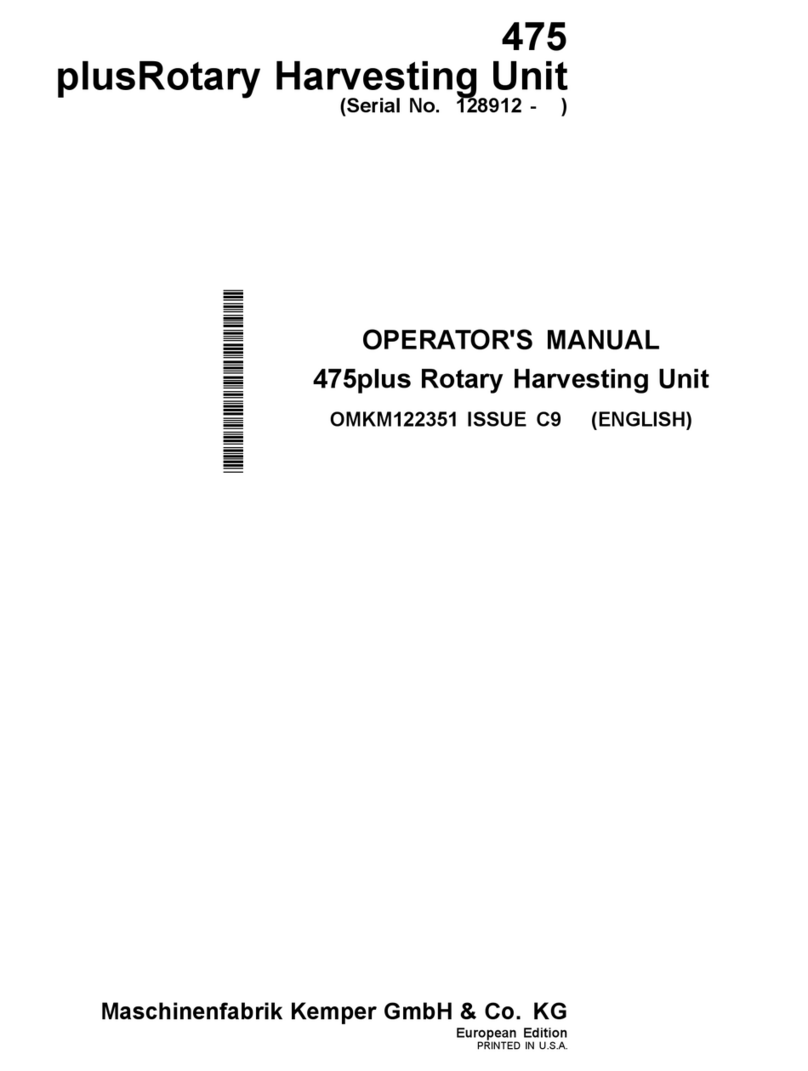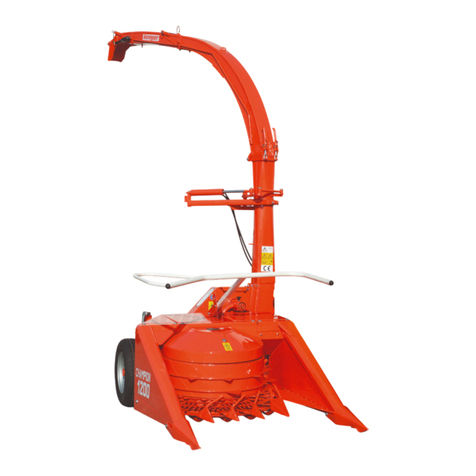
Contents
Page
Predelivery Inspection
Checklist before Using for First Time ...........CLIST-1
Identification View
Identification View...............................................00-1
Safety Measures
Recognize Safety Information ............................05-1
Follow Safety Instructions...................................05-1
Understand Signal Words...................................05-1
Check Machine Safety........................................05-1
Use Safety Lights and Devices...........................05-2
Ballasting for Safe Ground Contact....................05-2
Observe Maximum Permissible Front
Axle Load .......................................................05-2
Observe Road Traffic Regulations......................05-3
Prevent Machine Runaway.................................05-3
Switch for Road/Field Mode ...............................05-4
Danger of Falling ................................................05-4
Retighten Wheel Nuts.........................................05-5
Prepare for Emergencies....................................05-5
Wear Protective Clothing....................................05-5
Guards and Shields............................................05-6
Practice Safe Maintenance.................................05-6
Support Machine Properly..................................05-7
Remove Paint Before Welding or Heating..........05-7
Safety decals
Pictorial Safety Signs..........................................10-1
Replace Safety Signs .........................................10-1
Operator's Manual ..............................................10-1
Front Wheel Attaching Nuts................................10-2
Support Wheel....................................................10-2
Attaching
Ballasting the Forage Harvester.........................15-1
Prior to Attaching................................................15-1
Automatic Support Wheel Identification..............15-1
Attaching to a Rotary Harvesting Unit
with AHC (Option) ..........................................15-1
Unfold the Rotary Harvesting Unit ......................15-2
Attach Support Wheel.........................................15-2
Locking Device Position .....................................15-3
Adjust Locking Device (Only for Initial Use) .......15-3
Lock Support Wheel ...........................................15-3
Locking Status Indicator .....................................15-4
Page
Detaching
Detach Support Wheel .......................................20-1
Support Wheel Operation
Observe Maximum Permissible Front
Axle Load .......................................................25-1
Driving on Roads (Claas Forage Harvesters).....25-1
Driving on Roads (Fendt Forage Harvesters).....25-3
Locking Status Indicator .....................................25-6
Additional Weights
Additional Weights (Ballasting)...........................30-1
Ballasting chart (CLAAS forage harvesters).......30-1
Wheels
Service Tires Safely............................................35-1
Wheel Bolts and Nuts.........................................35-1
Tire Size .............................................................35-2
Tire Inflation Pressures.......................................35-2
Troubleshooting
400F Support Wheel...........................................40-1
Lubrication and Maintenance
Metric Bolt and Screw Torque Values.................45-1
Service Intervals.................................................45-1
Grease................................................................45-2
Every 10 Hours - Hook and Locking Devices .....45-2
Every 50 Hours - Wheel Nuts .............................45-2
Every 50 Hours - Wheel Bolts ............................45-3
Every 50 Hours - Swivel .....................................45-3
Every 50 Operating Hours—Wheel Hub.............45-3
Check the sensors and adjust them
(only rotary harvesting units for
Fendt forage harvesters)................................45-4
Technical specifications
400F Support Wheel...........................................50-1
EC Declaration of Conformity .............................50-1
Serial Number
Support Wheel Serial Number Plate...................55-1
Serial Number.....................................................55-1
Original Instructions. All information, illustrations and specifications in this
manual are based on the latest information available at the time of publication.
The right is reserved to make changes at any time without notice.
COPYRIGHT © 2018
John Deere GmbH & Co. KG Mannheim Regional Center
Zentralfunktionen
All rights reserved.
A John Deere ILLUSTRUCTION ™ Manual
i031318
PN=1
